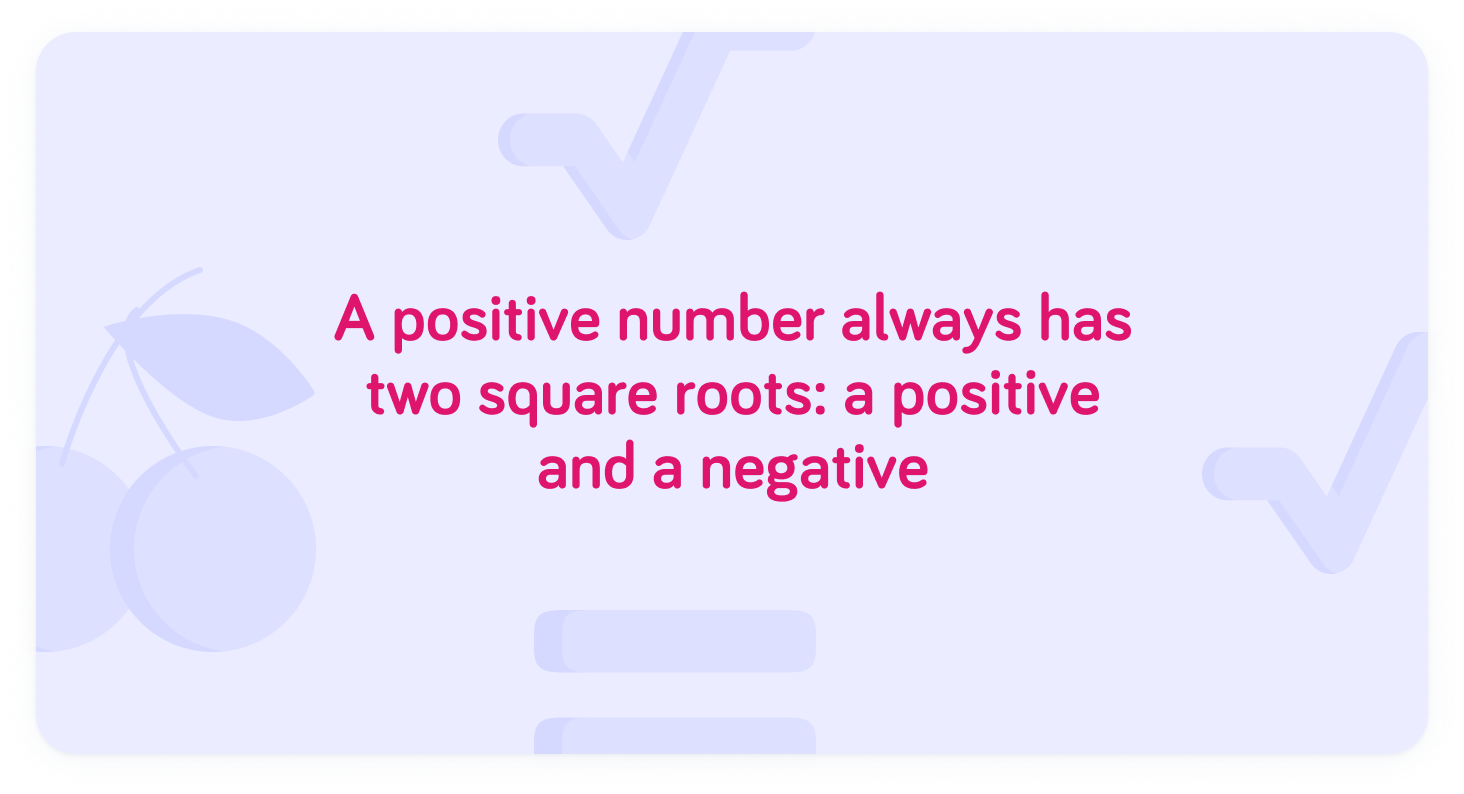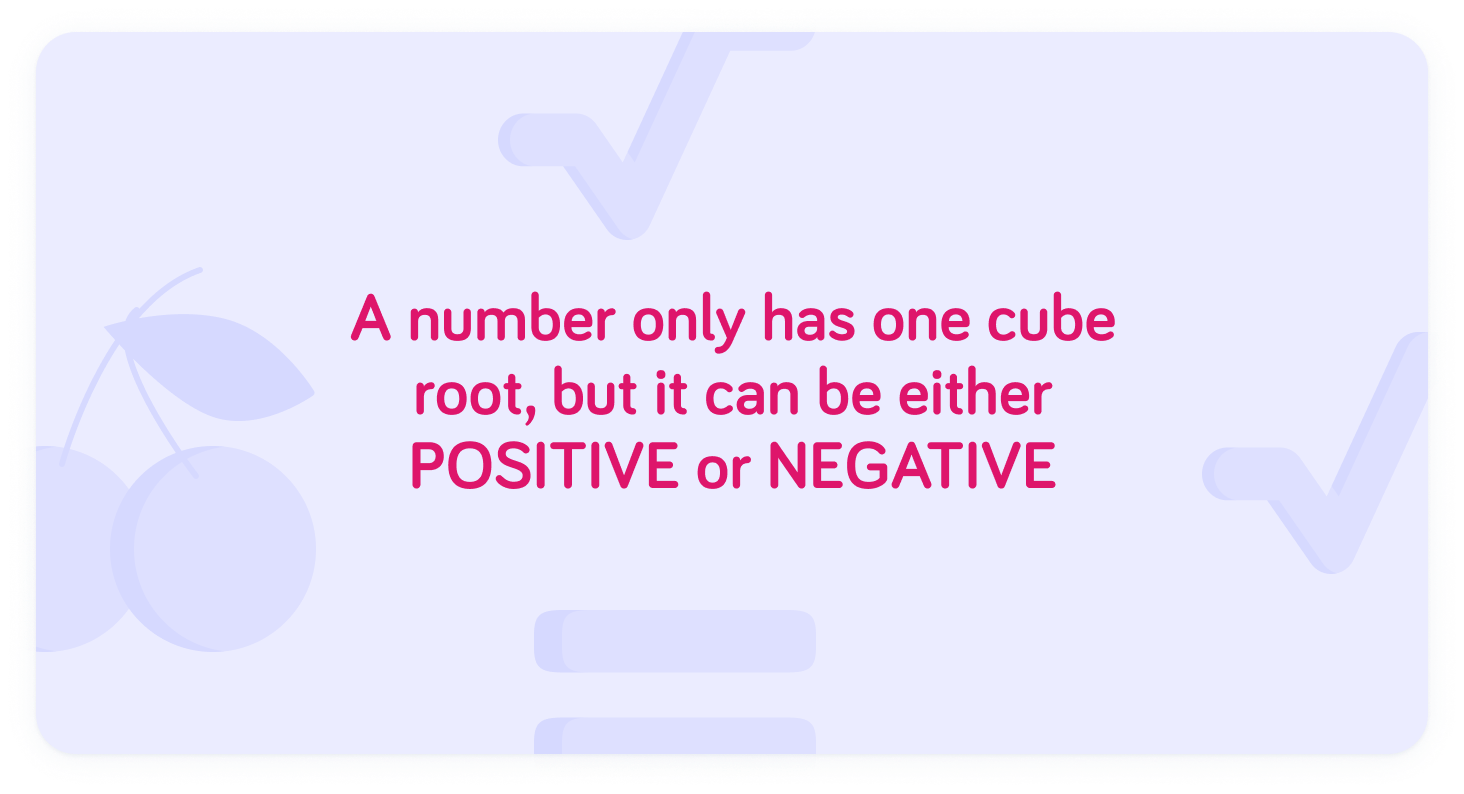YOU ARE LEARNING:
Roots

Roots
The root of a number is a number which, when multiplied by itself, will make the original number.
Roots reverse the process of indices, to find the original number.
Imagine a number, let's call it x. If we multiply this by itself we get x2. This is the square number.
x would be the square root as it is the number that was originally squared.
What is a square root?

Let's think about this concept with numbers.
The square root of 25 is 5 because we know that 5×5=25
We can denote this with a sign:
25=5
How would you write the following phrase? "Square root of 16"

Multiplying two negatives together gives a positive number. Therefore,25 has another root:
−5×−5=25
We can describe the positive and negative square roots with a ± sign - this indicates both a positive and a negative option.
25=±5
A positive number always has two square roots
A positive and a negative

Find the values of 36

Work out the values of 100

A cube root of a number is a number which, when multiplied by itself 3 times, generates the original number. The cube root of 64 is 4.
4×4×4=64
We indicate a cube root with the 3symbol.
364=4
How would you write "the cube root of 125"?

Unlike square roots, a number will only have one cube root, but we can consider positive and negative numbers. For example:
3−8=−2
A number only has one cube root
But it can be either POSITIVE or NEGATIVE

What is the cube root of 27?

Work out the value of 3125.

The square root of 0 is 0. This is because: 0×0=0
